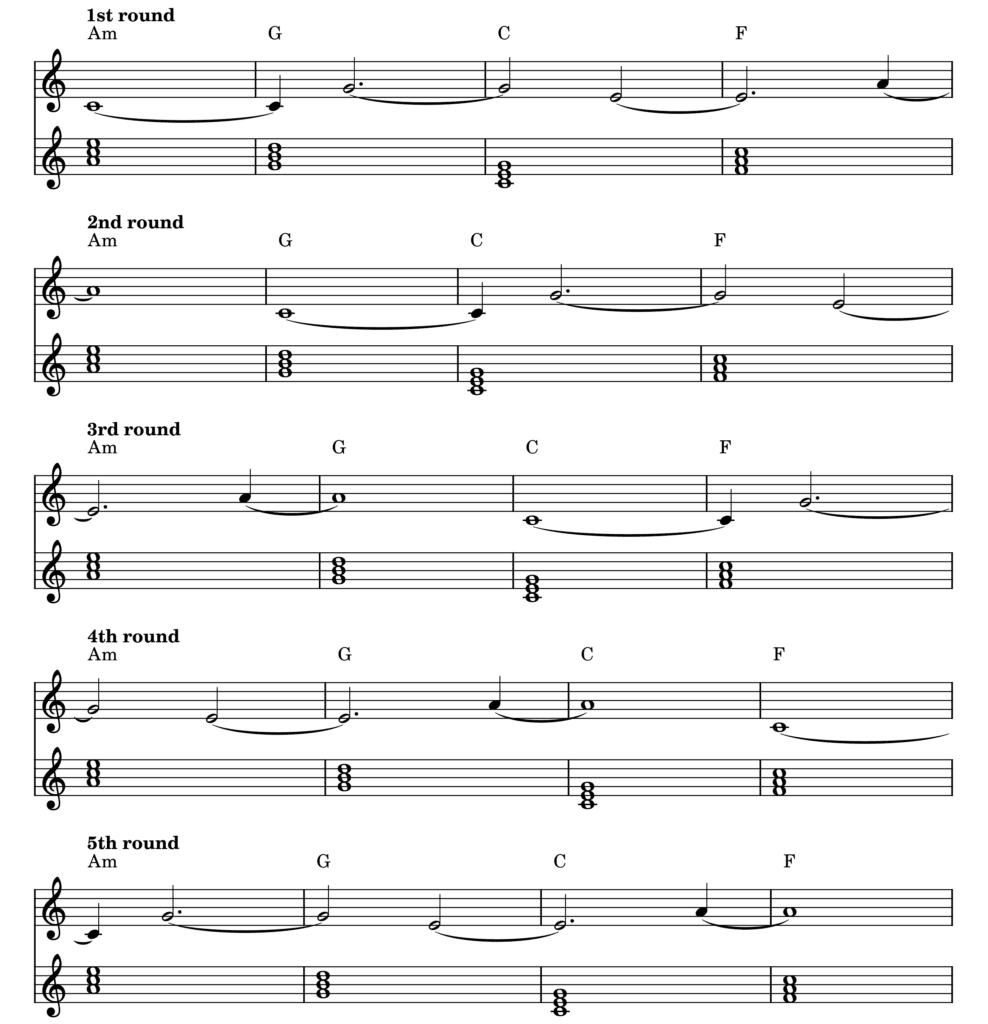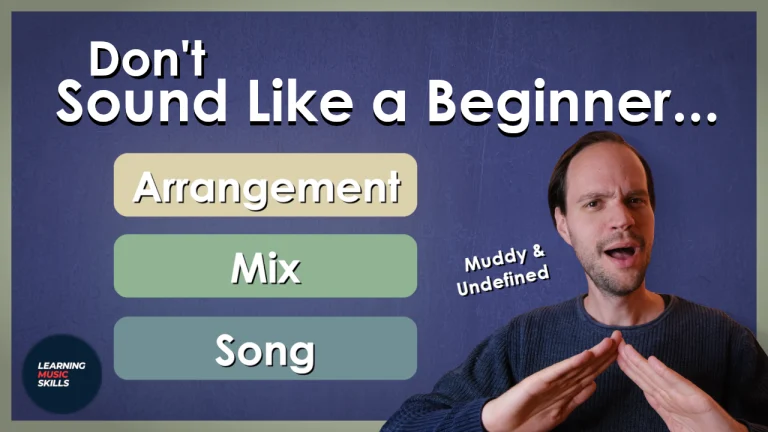Are you afraid that people might not listen to your

The free tutorials and articles from Learning
Listening to
In general, we just tend to zone out, because nothing is catching our ear. Nothing is changing. Nothing is grabbing our interest. So the goal is to break these fixed and repetitive patterns. Doing this the wrong way is easy. But doing it in a subtle and more aesthetic way can be difficult.
One technique that I find to work very well is creating layers that overlap. This automatically breaks any boring symmetry that might be too predictable.
Let’s see how it works.
Video Tutorial
Would you rather watch my approach to how to make a song interesting? Check out this short video tutorial.
If you want to read the video transcript see below this article.
What Makes A Song Or Composition Boring
While I was working on my episode on how to create beautiful and addictive chord loops, I noticed that things can get boring quite easily when you only have one chord loop that repeats. So the question is how do you create variation without breaking the flow of the
This is the chord loop that I’m talking about. And it repeats over and over.


The melody and the chords start and stop at the same spot. The result is that nothing really develops and everything is rather square. You will get trapped inside the chord loop!


How To Make a Song Interesting
A technique that you can apply to any of your songs or compositions, is one of unequal phrase lengths.
I wrote a repetitive melody that holds each note for five beats. It’s not special, but it’s enough to break free from my chord loop and create more interest and overlap.


So how can something so simple help you with how to make a song interesting? The melody is held for five beats, but the chords last for four beats. This means that they start to drift away from each other immediately.

In total it will take five chord progressions or 20 bars before the melody and chord progression will start on the same spot. With this technique, you will never have boring

Other Reasons Why Your Music Could Be Boring
There are many different things that make a song or composition good. And there are also many different reasons why your song is boring or not that interesting.
- Bad chord progressions
- There are no song sections that stand out
- The melodies don’t seem to go anywhere
- It’s in the wrong tempo
- The arrangement and instruments are not suitable
Bad chord progressions
There are two common error’s that many songwriters and composers make when it comes to chord progressions. Either they use way too many. The result is that the listener has no idea where the

On the other end of the spectrum are chord progressions that have too few chords. There is just too much repetition going on. Again, depending on the style, this could be very boring. Your listener would like to hear some new sounds every now and then.
There are no song sections that stand out
If everything is more or less the same, then there is no variation. What you get is that the listener cannot distinguish the different parts from one another. Over time the listener will get less and less interested. Because in his/her experience nothing is changing. So why listen until the end if there is nothing new?
The melodies don’t seem to go anywhere
How to make a song interesting cannot be done without melody. When your melody just cruises around the same notes without really going up or down. This will often cause your listener to stop listening. Because again, if you’ve heard everything, then why stick around?
The song is in the wrong tempo
I have made a full-blown tutorial about how important your tempo is. It can actually make or break your song. By changing the tempo you can get amazing results that you never expected before.
The arrangement and instruments are not suitable
Imagine this: you have a rock song but it is played by an ensemble of recorders. That sounds horrible, right?
While this example is quite extreme, to say the least. Composers, producers, and songwriters often choose the wrong instruments. If you want something heavy, don’t use light instruments and expect an overwhelming result. Imagine that your arrangement can definitely be the key to how to make a song interesting.
Conclusion
Probably now you see how important all these different factors are. But don’t be afraid to repeat different elements in your
Support new videos by becoming a member and receive benefits in return. Or by giving a one-time donation!
https://www.buymeacoffee.com/musicskills
Video Transcript
Does perfect symmetry exist?
And should that even be our goal in
And when everything lines up perfectly does it really sound interesting?
So if it’s not the perfect balance and symmetry that we’re looking for in our compositions and songs then what is?
Let’s find out and let’s get creative!
On a personal note, i have a difficulty listening to
Okay, so from now on i’m only going to write things that are uneven and irregular. Now that should be interesting!
Calm down that’s not what i meant.
So what do you mean then? Shouldn’t your
No, no, what i’m talking about is combining for example chord progression of four bars with a melody that is longer or shorter. So you combine something regular with something irregular. And this difference in phrase lengths can have far reaching consequences as you’ll see later.
In that case in this new song that i’m working on i did exactly this.
The whole composition is based on a repeating chord progression that comes from my episode on how to make beautiful and addictive chord loops.
The chord progression in this song has 4 chords and 4 bars. While the melody that’s played together with it is 8 bars long. But watch out because in itself chord loops can be very treacherous. It’s easy to get trapped inside a chord loop. You’re gonna get locked into a four bar or four chord structure.
When this happens that means that all of your melodies chords and progressions they start and end at the same time. And just imagine how boring and predictable that must be.
Obviously, i don’t want my
In itself not super interesting but when you compare it to the underlying chord progression, each chord is held for four beats.
This means that the melody and the chord layers they start to shift away from each other immediately.
After four bars the chord progression repeats when landing on the first beat. But as you can see the melody has not finished yet. And i can tell you that even with the next repetition the melody and the chord progression will not start on the same spot. In total it will take 5 chord progressions or 20 bars of melody before they start on the same spot again.
Just keep in mind that all of your melody notes should either be part of the chords in your chord progression or that they sound good on any given chord. And you need to test this because if you don’t, then maybe some of your repetitions will sound horrible and unintentionally dissonant.
This technique of regularity versus irregularity can be applied to any musical parameter that you like so be sure to experiment with this. But before you do please don’t forget to press the like button and share a video if they’re helping you in your
Stay creative and for now…
See you next time!









